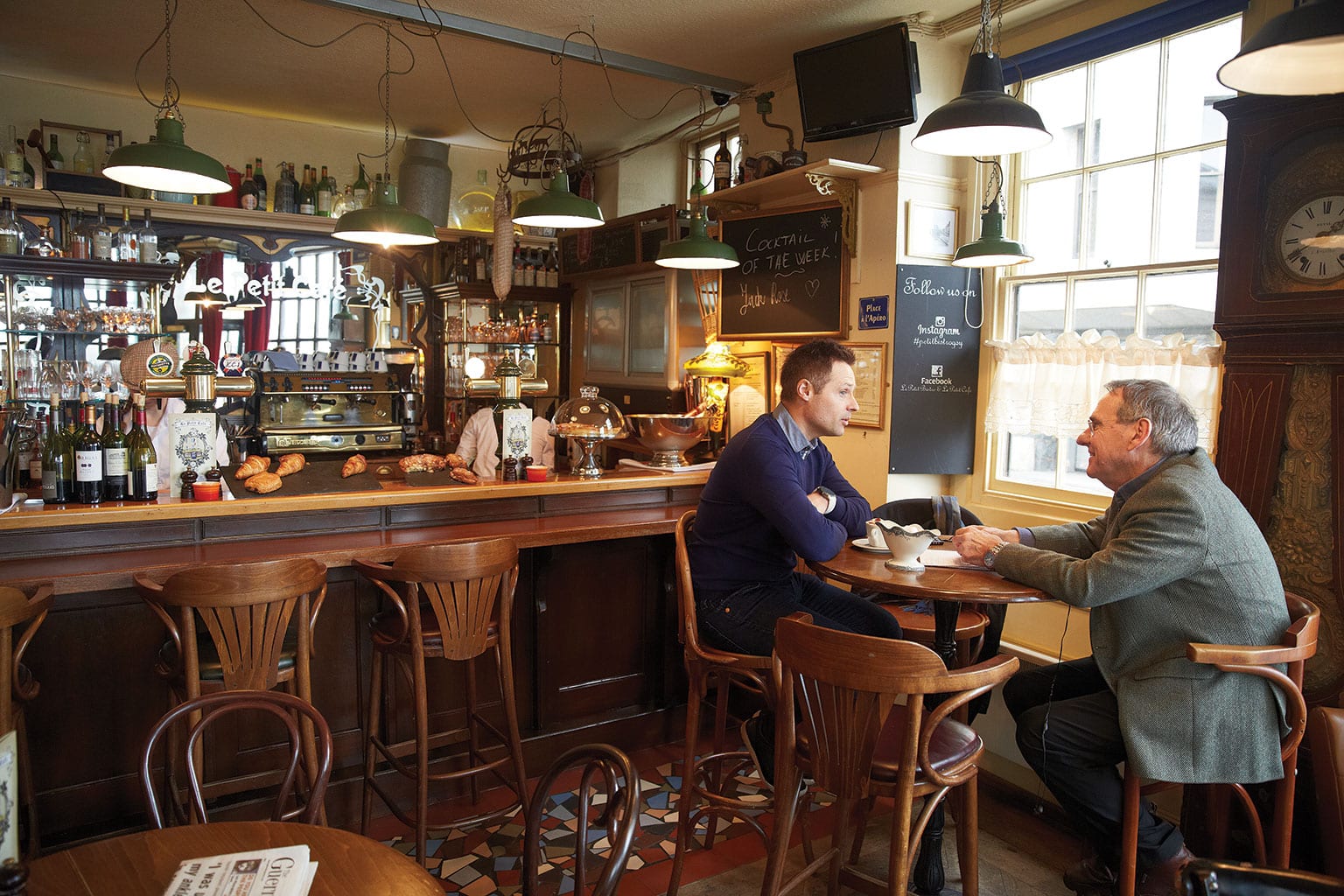Lunch with Andy Priaulx
A world champion though you wouldn’t know it, Guernsey’s BMW touring car ace has switched tracks for Ford’s GT team. Main target? Le Mans
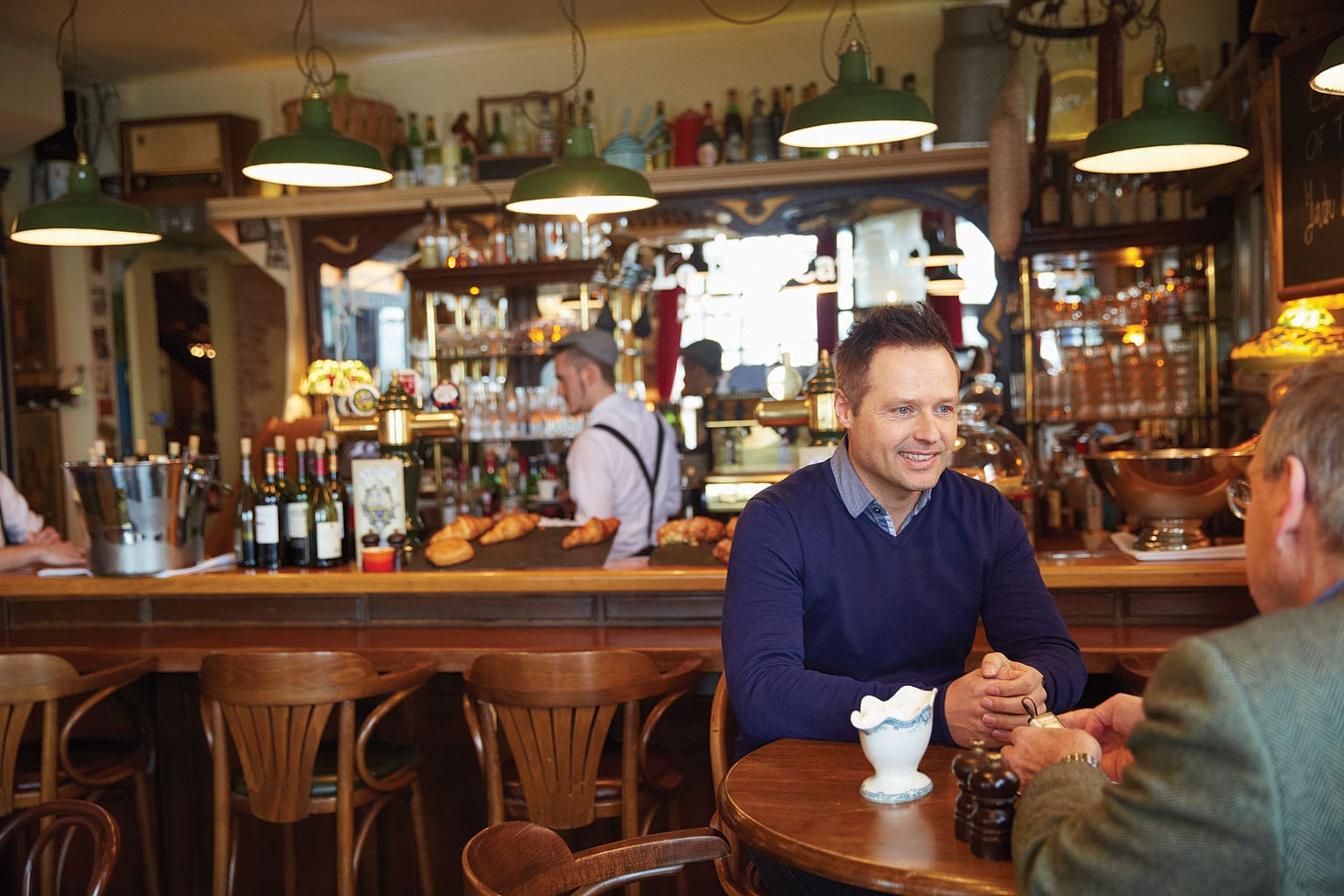
Howard Simmons
In these days of wall-to-wall Formula 1 television coverage, more people are aware of motor racing than ever before. Our fine world champion Lewis Hamilton is subjected to a degree of fan worship and tabloid exposure normally reserved for teen pop idols and misbehaving reality starlets, and earns hundreds of thousands of pounds every single week. Yet F1’s very success as commercial TV entertainment for the masses means that most of the other rewarding and exciting disciplines in motor sport – like rallying, sports car racing, GP2, historics, national racing at all levels – have been thrust into the shadows, and rarely get the coverage they deserve.
So the general public, unlike your fully informed Motor Sport reader, has no idea that we have another recent British world champion to be proud of: one who, remarkably, won his title three years running, against the strongest works opposition that his chosen formula could offer.
But Andy Priaulx is sanguine about that. “I know I could win a dozen touring car world championships, and get less recognition than if I just finished ninth in one F1 Grand Prix. But that’s the way it is.” He is happy to have achieved, after a long fight and much sacrifice, his goal of making it as a professional racing driver. Now, after 13 seasons with BMW, he has joined Ford to be part of the Blue Oval’s return to Le Mans, 50 years after its first victory in the 24 Hours. He’s excited to be part of what is clearly a very serious programme, and he loves the whole philosophy of the new Ford GT. “Today the original GT40 still looks wonderful. I hope that in 50 years people will look at this one and feel the same.”
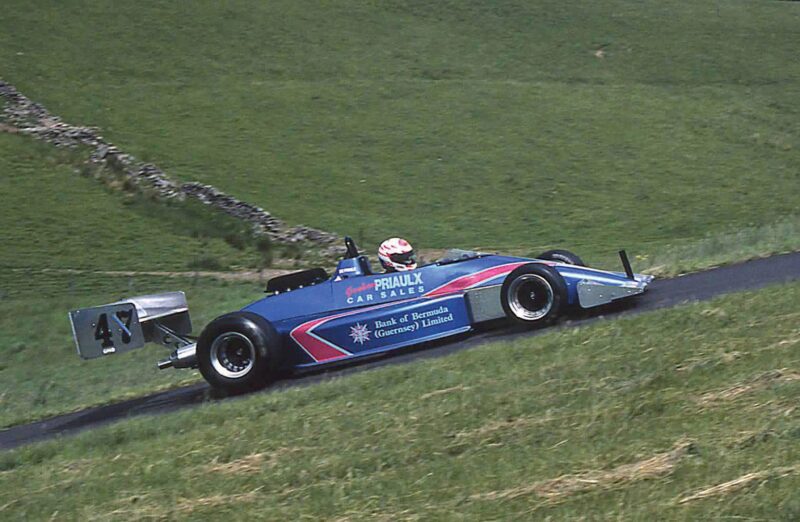
In 1995, Priaulx took UK hillclimb title in a Pilbeam-DFL
Steve Wilkinson
Andy is a Guernseyman. His homeland is just nine miles long and five miles wide, and he loves it dearly. He meets me at the tiny airport and insists on giving me a guided tour of the island’s charms, including a storming drive up the Val de Terres hillclimb in his factory-issue Ford Mondeo, before we repair to Le Petit Bistro in St Peter Port for lunch. Guernsey may be 100 miles from mainland England but it’s barely a dozen miles from France, whose coast is clearly visible in good weather. So Mickaël and Delphine Pesrin’s menu is properly French: real onion soup with brandy and a hefty crust of melted gruyère, and locally caught sea bass dressed with razor clams, parsley risotto and a citrus tartar. Like any serious athlete, Andy drinks only water and decaf coffee.
The Priaulx family roots in Guernsey go back to the 11th century, and Andy is the third generation to be a racing driver. His grandfather, whose first language was Guernsey French, lived through the rigours of the German occupation in World War II: evidence of this still remains in fortifications and gun emplacements on the island. Once the war was over he built a rear-engined single-seater that was a consistent winner at Val de Terres and in Guernsey’s other form of motor sport, sand racing on its long, flat beaches.
Andy’s father Graham campaigned a Fiat-Abarth initially, and later a Tiga 2-litre sports-racer. Meanwhile young Andy was passionately pursuing any form of motorised sport that he could. He was karting at eight years old, and at 10 he took up motocross with a tiny bike. As he grew bigger the bikes got bigger too.
Then there was offshore power-boat racing. “A motocross friend was my crew. We raced around the Isle of Wight, down to Torquay, and a lot around the island. It was really challenging. You have to read the sea and get the trim of the boat right, like feeling a car through your backside. Too much and the boat starts to flail around, not enough and the boat is down in the water and you’re slow. When it’s rough you have to judge it wave for wave.
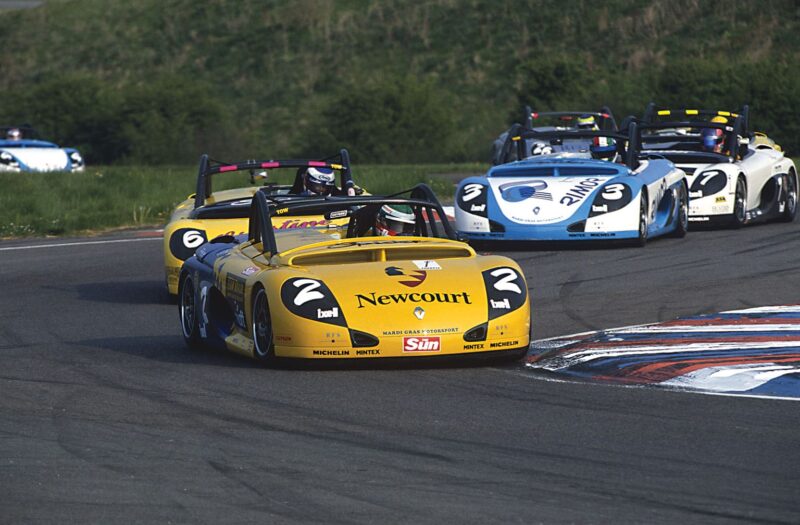
Mind training brought perfect 1999 in Renault Spiders
Motorsport Images
“By the time I was 18 I was working as an apprentice in the family garage. I was doing motocross at quite a high level, and starting to hurt myself. My father said he wanted me to carry on walking with my legs, and suggested I should try four wheels. Circuit racing was out of the question for us financially, so we opted for hillclimbing and bought a secondhand Mallock U2. We had some success in Channel Islands events and ventured to the mainland too, and we both caught the hillclimbing bug, big time.
“In 1994 we got our first single-seater, a Pilbeam-Hart. In hillclimbing you can share a car, of course, so we did a full British Championship season together. We were running against the top guys, the Roy Lanes, the David Graces, who all had the big F1-engined V8s, but I scored an outright win at Wiscombe Park. Gradually I started to beat my dad. He was quick, and we were always close, but to be honest I think he was driving more for me: he was always concerned about bringing the car back in one piece for my turn.
“That first year I was fourth in the championship, only beaten by three V8s, so for 1995 we pushed the boat out and bought a secondhand Pilbeam-Cosworth DFL. I was still only 20, and it was a serious piece of kit. It had massive grunt, and the first time I drove it I couldn’t believe how all that 500bhp came in so relentlessly. Big wings and skirts, so good downforce when you got the speeds up. You’d often be crossing the finish line nudging 150mph or more – and all those tracks are very narrow.
“We kept the car on the mainland at a friend’s house, and Dad and I would fly in on Thursday, prepare the car on Friday, and tow it to the event for Saturday and Sunday. We’d work on it Monday, cleaning it up, swapping the gear ratios for the next event, and fly home Tuesday. I won first time out, breaking the Prescott hill record, and as the season went on I scored maximum points in the series – you count your 10 best scores and I scored 100 – so I’d won the British hillclimb title. It was still a family effort, and Dad was equal third in the championship. In the final round, up in Scotland at Doune, Dad got the record, then I took it, then he took it again, then I got it back on my last run. We both knew that was probably my last-ever hillclimb. Doune is
a very fast, narrow hill, and I had to risk everything to beat him.
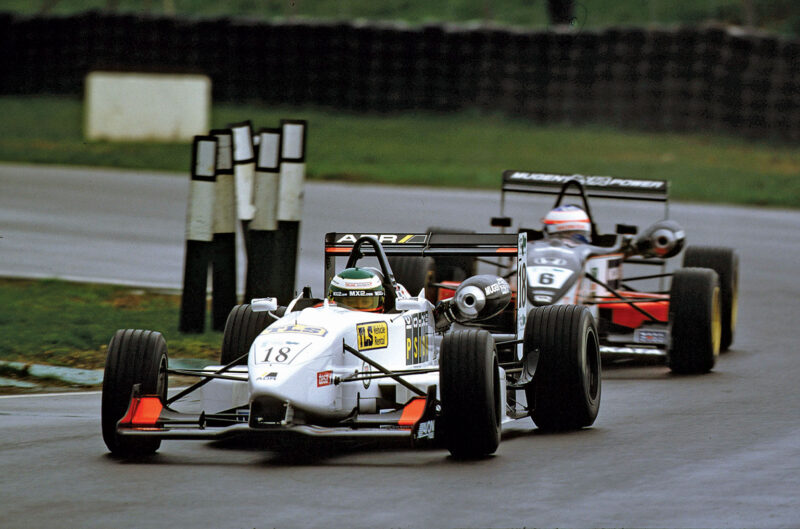
New sponsors funded 2001 F3 seat
Motorsport Images
“My closest rival that year was Mark Colton. We were head-to-head and became good friends. Dad and I decided to miss the Irish round, Craigantlet, because we didn’t really have the budget to get there, although Mark tried to get us to change our minds because he wanted to have us there to race against. That was where he was killed: his front wing failed, and he hit a telegraph pole.
“I did realise that racing this big, very fast car on such narrow, twisty, bumpy little lanes was dangerous. The cars go on getting faster and faster, but the tracks are the same as they’ve always been. You can’t move the trees back. But the special character of hillclimbing is precisely because the tracks haven’t changed. It’s the same for the TT bikers on the Isle of Man: you can’t move the houses back. It is what it is.
“People don’t realise how competitive championship hillclimbing is. A hundredth of a second makes the difference between winning and losing. In a three-hour race, if you waste a hundredth, you can usually get that back. But hillclimbing is like permanent qualifying – and on cold front tyres. If you’re the quickest before the final Top Ten runs you’re the last to go at the end of the day, sometimes into a low sun. As you sit on the line the big digital clock tells you what the man before has done, so you know what you have to beat. Or you’re sitting there and spots of drizzle start to appear on your visor. Or you’re told to switch off and wait until your friend’s bent car comes down the hill on the back of a truck.
“And your rivals really are your friends. Once when I was fighting David Grace for BTD, as I did my tyre-warming going up to the line, a driveshaft let go. Before I knew what was happening I felt the car being pulled back and jacked up. David had run to get his spare driveshaft and his spanners, and there were a dozen people clustered around my dad helping him fit David’s shaft. They had it done inside three minutes, and I was able to take my climb. I can’t see Vettel’s mechanics rushing to help Lewis like that…
“The top hillclimbers do it very seriously, but in the end it’s really all for fun. Dad and I just wanted to be as good as we could be, and I didn’t have ambitions beyond that. But because I was going well there was some media hype, and at the September Prescott who should turn up but Paul Stewart. Jackie had sent him to summon me to Snetterton for a test.
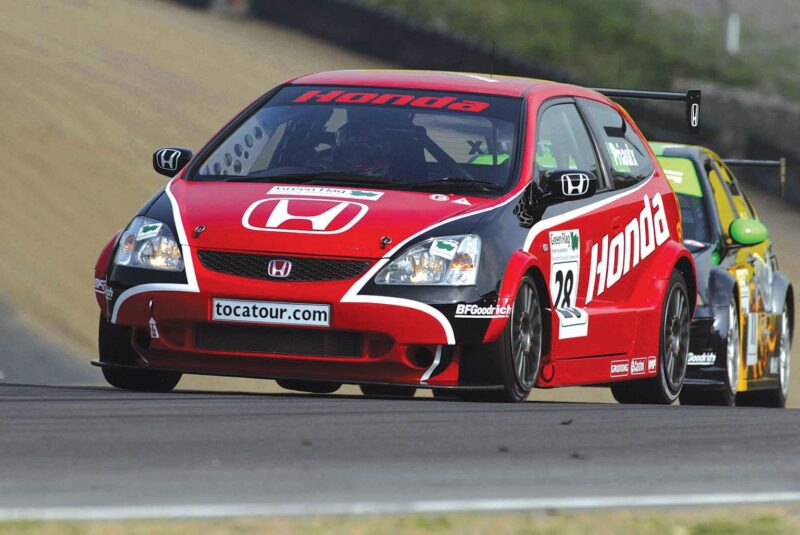
Honda’s BTCC entry was Priaulx’s first paid drive, but lasted just a year
Motorsport Images
“Well, I’d never driven on a racing circuit in my life. I had no idea about racing lines, because it was the first time I’d been on a track more than about 12 feet wide. The car seemed so slow, the track seemed so huge, and I made some mistakes because I was very raw. But after that test I was offered a Vauxhall-Lotus season with Paul Stewart Racing. They would cover some of the cost, but I still had to bring £60,000, which was out of the question for us. Our entire championship-winning hillclimb season, running both of us in the car, had cost us £20,000.
“But then I thought, I’ve done all right in hillclimbing, maybe I’ve got some talent, maybe I should try to find a way to do circuits. I managed to scrape together various little bits of sponsorship, and I ended up signing a deal with Andy Chisholm at Martello Racing to do Formula Renault. It was not a success. My first race was at Thruxton, and I qualified last. I scrapped over a few of the bottom positions as if my life depended on it. I went on to do half the season, but circuit racing still felt totally awkward. Then the money ran out.
“At the end of the year I said to my wife Jo, ‘We’re going to have to do this properly, or not at all.’ So we moved to the mainland, towed a caravan to Silverstone and lived in that. Jo got a job in the ticket office at £4 an hour, and I started working at the racing school. That may seem strange when I had so much to learn myself, but being an instructor, thinking it through, taught me how to race. And I made some good friends. John Pratt, one of the best Formula Ford racers at that time, was a great influence on me. These days he runs iZone Driver Performance for me: that’s the driving school I have at Silverstone.
“I was now trying to do B-class Formula 3, and it was just awful. I paid for the ride at Falcon Racing, and I wasn’t doing very well. Then I had a one-off race with SpeedSport, Mike O’Brien’s team, and it rained. I went from last on the grid to 10th by the end, overtaking some good people. That restored my confidence a bit, and I also did a couple of A-class races with TOM’s Toyota. But at the end of that season I realised that I should try to learn my trade lower down the ladder.
“Renault Spider was a one-make formula that seemed affordable, so I bought a car and prepared it myself. Alan Docking lent me a corner of his workshop, and I instructed at Silverstone all day and worked on the car most of the night. I finished the season with some podiums and a few fastest laps, but money was still desperately short, and I’d had so much failure and disappointment, I was mentally ruined. I knew I had to do something pretty sensational, or accept that I’d always be struggling.
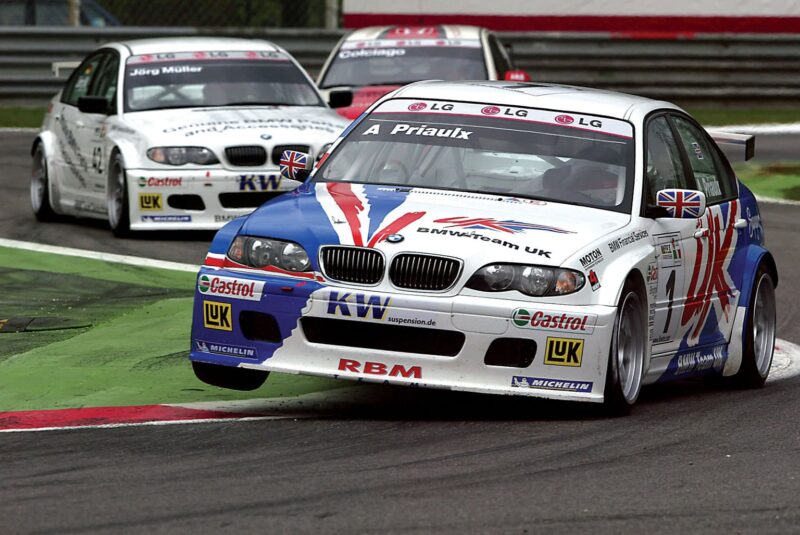
At the top of his game in 2005, topping the new WTCC to become world champion
Motorsport Images
“Then over that winter John suggested I took a course in what’s called the Silva Method of mind training. It involves meditating to visualise your goals, whether it’s visualising a perfect lap or visualising a sponsor’s cheque coming through the letterbox, always focusing on the end result. Well, it worked. Up to then I’d never won a race in my life. I went to the first round of the 1999 Spider championship at Donington, and before I got there, in my mind
I had already won. And I went out and drove away from everyone.” It was the same for the rest of the season. There were 13 rounds of the championship: Andy took 13 pole positions, won 13 races, set 13 fastest laps, and was voted British Club Driver of the Year.
“I was now using a little outfit at Silverstone called Mardi Gras Motorsport to prepare the car, so I could concentrate on preparing myself. I got into a routine of physical and mental training, chasing sponsors, and meditating: visualising my goals, feeling the trophy in my hands, smelling the champagne. I’ve gone on doing this ever since, and there have been several times in my career when it’s really worked for me.
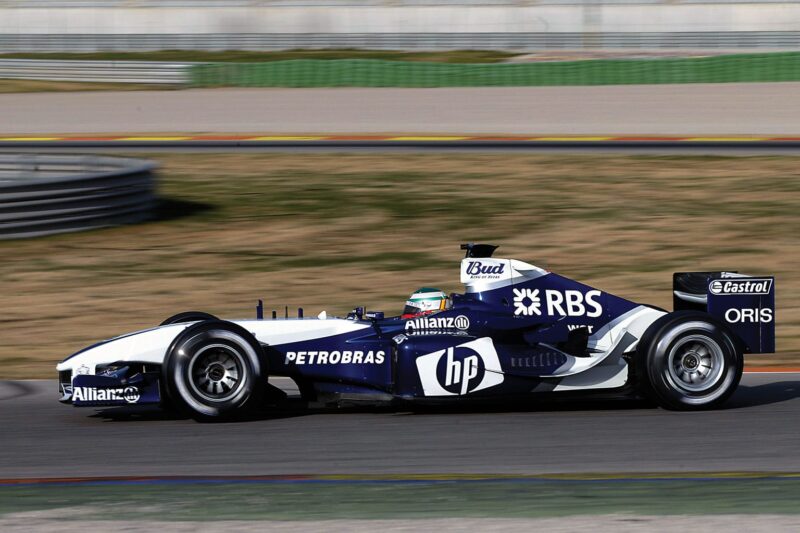
2005 Williams F1 trial led to some testing
Motorsport Images
“Having won the renault Spider championship I asked Serge Saulnier, who ran the Renault-engined Promatecme F3 team, to run me in a test he was having at Paul Ricard to choose his No2 driver for 1990 alongside Matt Davies. He wasn’t keen: ‘You are 26 years old, so why are you trying to get into F3?’ But I persisted, and eventually he agreed. It was wet and slippery, and on about the sixth lap I went off. Came back in embarrassed and apologetic, gravel everywhere. Serge said, ‘OK, go out and do another 20 laps.’ Out I go, and I skid off again. Serge said, ‘Andy, I have seen everything that I don’t want to see. You can go home now.’
“I begged, I pleaded, I told him I had let him down, but please would he let me finish the day. Reluctantly he agreed. Now I knew it just had to happen. And I was faster than all the other drivers, and I got the ride.
“As it turned out the Renault engine didn’t have the legs of the Toyota that season, but I had a pole position and three podiums, and in the championship I finished ahead of Matt, my more experienced team-mate. Things were getting better now. We’d moved from the caravan to a little house in Towcester – although we still towed the caravan to races behind our Ford Escort, to save on hotels – and I’d stopped instructing to concentrate on my racing.
“But when I shook hands on a deal with Alan Docking Racing for my 2001 F3 drive, which was going to cost me £200,000, I had no idea how I was going to pay for it. I’d worked very hard to find all sorts of small sponsors, a sticker here, a name there. They’d come to the races and I’d have to welcome them, make sure they were happy, then I’d get in the car and Jo would look after them all day. Now I found two really good sponsors, Psion Computers and a Danish investment banker, Lars-Christian Brask. Both of them stayed with me for a long time. It was a tough year because our budget was still much less than the big teams, but I won two rounds, had three seconds and a third.” Autosport said that in the wet Andy was the only driver able to threaten series winner Takuma Sato.
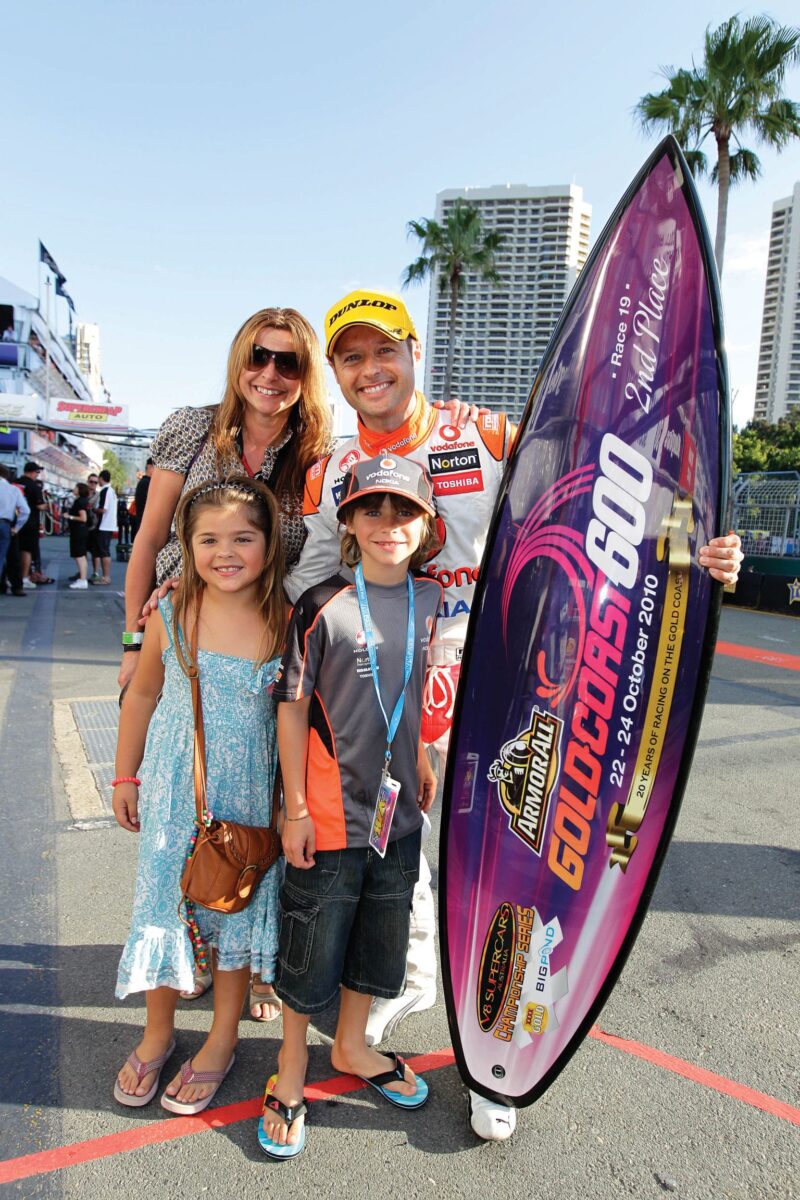
Priaulx with wife Jo, karter Seb and Daniella
Motorsport Images
“Jo was now expecting our first baby, and during a check-up the X-rays showed that the foetus was very small, and the umbilical cord was wrapped around its neck. Right away they gave her an emergency Caesarean, and Seb was born, very premature. He was tiny, less than four pounds, and was in an incubator for the first month. But he did well, and soon we could take him with us to the races.
“The other important thing that happened that year was that in the British Touring Car Championship Phil Bennett, who drove for Vauxhall, got a one-race ban, and Derek Warwick heard about it. He’s a near neighbour in Jersey, a respected friend who has always given me good advice. I was at the F3 round at Knockhill, I’d just put it on pole, and Derek called me: ‘Be at Oulton Park next weekend.’
“I turned up, I’d never sat in a touring car before, but I took the Vauxhall out and against all the BTCC regulars I put it on pole for both races. I finished second in the first race, and was battling for the lead in race two when I ran wide, damaged the sump, and that blew the engine.
“Suddenly lots of people wanted to speak to me. Andy, this is Eddie Jordan, we’d love to run you in F1, how many millions can you bring? In the real world Honda offered me a two-year contract, and they actually wanted to pay me: £50,000 a season. For six long years I’d dragged Jo through so much pain, no social life because we never had any money, stupid things like we never had a TV. And now I was going to be paid to race.
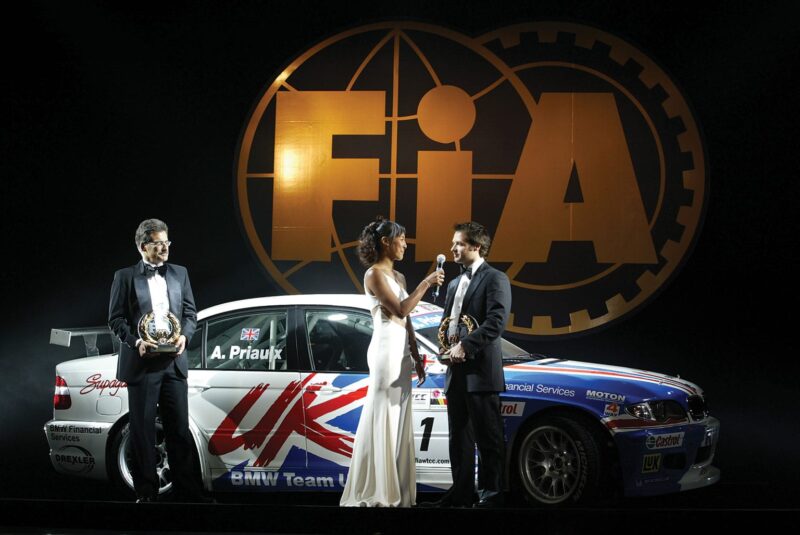
Receiving FIA WTCC award at the gala in Monaco in 2005
Motorsport Images
“Honda was pretty green in its first attempt at the BTCC with the Civic Type-R, and to start with we were a long way off. Gradually we developed the car, and by mid-season we began to get podiums. At Knockhill in August I took pole, won and set fastest lap, and we ended the season fifth in the championship. But at the end of the year Honda decided to pull out of racing. I was back to square one.
“That was when BMW called, and I found myself racing a 320i in the European Touring Car Championship. Well, it was the European in 2003 and 2004, and after that it became the World Touring Car Championship with rounds in places like Curitiba, Amozoc in Mexico and Istanbul. The car was officially entered by BMW UK and my contract was with them, but the British bosses weren’t big motor sport fans, and to be honest they didn’t really want to do it: it was only because Germany had told them they had to. At first they couldn’t even pronounce my name: who is this Andy Proolex?
“My car was prepared and run out of Belgium by Bart Mampaey’s RBM team, and they did a brilliant job. We were a one-car team, up against the Schnitzer cars that were effectively the works effort. They had all the data and the latest updates, and between their two cars they could run to a strategy. But the Germans, they’re wonderful engineers, but they don’t understand the human side. If you treat a driver like a machine, you’re not going to get the best out of him. RBM understood that if you can put your arm around a driver’s shoulders, that’s worth three tenths.
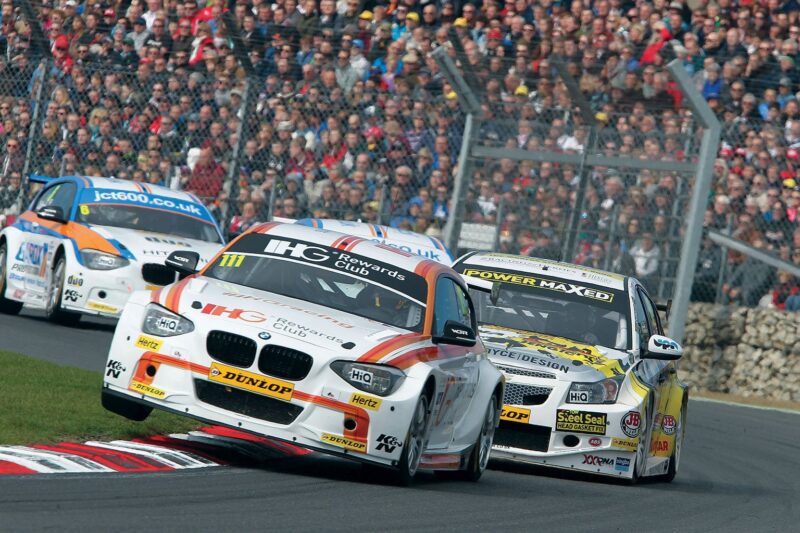
Back in the BTCC for 2015 with a WSR BMW 125i
Motorsport Images
“So that first year I won at Brno, Spa and Oschersleben, and ended up third in the series behind Gabriele Tarquini’s Alfa GTA and Jörg Müller’s Schnitzer BMW. I had just finished the Macau touring car race when I got an urgent phone call: Jo, who was pregnant with our second child but not due for some time, had been rushed to hospital. She’d developed a condition that was gradually shutting down her key organs. Daniella was delivered at once, five weeks premature, and after being on oxygen for a couple of days she was fine. But Jo was critically ill.
“After we’d been through all this and Jo was recovering, I was sitting on the end of her bed and she said, ‘We’ve had two premature babies. It’s something a lot of people go through. We need to find a way to help other parents who have to deal with it.’ That’s how the Priaulx Premature Baby Foundation got started. Seb and Daniella are 15 and 13 now, very fit and well, and Jo has worked tirelessly running the Foundation ever since.
“By 2004 I was in my stride with European touring cars. I had a season-long battle with Dirk Müller’s Schnitzer BMW, but going into the final round in Dubai I was 12 points behind and everybody thought it was all over. In fact, BMW had brought along a pile of T-shirts with ‘Dirk European Champion’ on them. I thought, right, we’ll see about that. I’d never seen the track before: I found out later that BMW had organised a secret test there for Dirk and Jörg, but I wasn’t invited. But hillclimbing taught me how to learn new tracks quickly, and I took pole. I got second in both races, Dirk got a fifth and a retirement, and that put us level on points. I had five wins to his three, so I was European champion. We got hold of one of the T-shirts, crossed out Dirk and wrote on it Andy.”
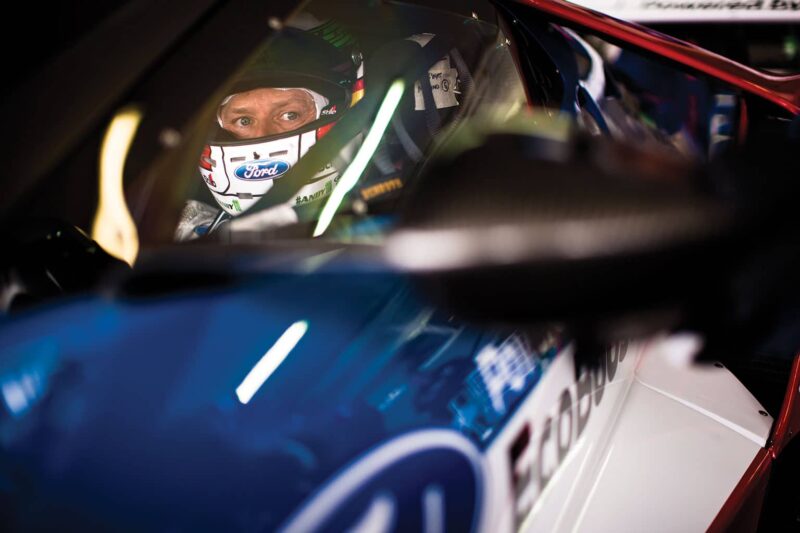
Fresh challenge for 2016 with Ford’s major GT assault
Motorsport Images
From the next season the series became a world championship. Andy only had one win in 2005, at Oschersleben, but by consistently running at the front he piled up 10 podiums, which gave him the title by a healthy margin from Dirk Müller, with Fabrizio Giovanardi’s Alfa Romeo third.
“Now that I could call myself world champion, I thought everything would be different. But when I woke up on Monday I found that life was still the same. Win on Sunday, forgotten on Monday. The only thing to do was focus on winning it again.” And the next season, after a really tense battle, he did just that. Jörg Müller was the favourite for Schnitzer, but Andy scored five victories and pipped him by one point for his second world title on the trot. Now he was determined to make it a hat-trick.
“In 2007 it was just as close. I’d been racing three Müllers, Dirk, Jörg and Yvan, none of them related [and no umlaut for Yvan, who is French]. This time my fight was with Yvan. He was in one of the Seat Leons, which were turbodiesels and had a lot of power. Going into the final round at Macau we were level on points.” In the first of the two Macau races Andy could only finish eighth. The WTCC rules dictated that previous winners had to carry ‘success ballast’, which in Andy’s case was now 70 kilos. But the rules also made the first eight in race one take the grid for race two in reverse order, which gave Andy pole, a start-to-finish win and world championship number three. In the 2008 New Year’s Honours he was made an MBE, which recognised the work of the Premature Foundation as well as his three world titles.
Meanwhile there had been other races: like Bathurst, which Andy first did in a big Opel Commodore with Yvan Muller in 2002. “It’s a wonderfully challenging track, makes the hairs stand up on the back of your neck. The first time you race there, it’s like the first time you see Eau Rouge.” Then there was the Nürburgring 24 Hours on the Nordschleife. “I did that in 2005 for Schnitzer. I was a Nordschleife virgin, and Hans Stuck was very kind to me: he drove me around for a couple of laps, and then sat me down and we talked it through, corner by corner. Then I went round and round in my road car to fix it all in my mind. And I won it. I was in the No2 Schnitzer entry, with Boris Said and Patrick Huisman. I remember doing the early morning stint with the sun coming up and I could smell the campers frying breakfast all around the track. There were guys who stood at the same bit of fence for the whole race, you could spot them each lap. There was one who waved a Guernsey flag every time I came past.
“That was a good week: won the Nürburgring 24 Hours, did a two-day F1 test for Williams, led the Silverstone round of the World Touring Car Championship until I got a puncture on my last lap. The Williams test was a BMW reward for winning the world championship and I took it very seriously, trained like a maniac, hanging weights off my neck all day long. They liked me enough to use me for some more testing that their regular boys couldn’t do, like the pre-Monaco test at Vallelunga. Of course I loved it. The FW27 felt to me like the perfect racing car: it did so much for you, downshifting, traction control. It left me with huge respect for the F1 drivers.”
After Andy’s third world title BMW continued in the series for three more seasons, but the Seat turbodiesels were favoured by the regulations and were appreciably quicker. He had nine wins and 13 podiums over that time, but could only finish fourth in the championship in all three years. “One of those wins was around the streets of Pau. It was wet, and I had to work for it: puddles, white lines, kerbs, a safety car, a restart, and I was under pressure for the whole race. I just love that place.
“Actually I reckon 2010 was just about my best year in touring cars. I won six races – on the Marrakesh street circuit, Monza, Zolder, Brands Hatch, Masaryk in the Czech Republic and Oschersleben. Seat had been running a six-speed sequential gearbox, so for the last two rounds BMW applied to the FIA to run a sequential box. In Japan I stick it on pole and I finish second, which moves me into second place on points with one round to go. Then we get disqualified.” After a protest from Chevrolet, which went on to win the series, the FIA conceded that the sequential box had been homologated just for Alex Zanardi, who could only race with hand controls.
BMW then withdrew from the WTCC and put Andy in the works 4-litre V8 M3s in America and Europe in the ALMS and ILMS, plus he travelled to Australia in the off-season to race the big V8 Supercars for Holden. “Big heavy monsters, 800bhp, not a lot of grip. I was second at Surfers’ Paradise sharing with Craig Lowndes.
“In 2010 I did my first Le Mans with the big-engined M3: we were out embarrassingly early with a fuel sensor problem. The next year the cars were more competitive with the Ferraris and the Corvettes, but Dirk and Joey Hand and I had a misfire, then a puncture. That dropped us way down, but in the end we climbed back up to third in class.”
For two seasons, 2012/13, Andy did the German touring car series, the DTM. “That was a horrible part of my career. There’s something weird about DTM: I don’t think David Coulthard or Jean Alesi enjoyed it much either. You can go from one weekend being right at the front to the next weekend running 20th. I spent the first year blaming myself, but then I realised it wasn’t me, and there were so many things in the politics and hierarchy of DTM that I couldn’t influence. In my first DTM race I was first BMW home, sixth behind the Mercedes and the Audis, so I was BMW’s first points-scorer that season; and in my last I qualified third and finished sixth. But between those two there was nothing better.”
So for 2015 it was a complete change: a season back in the British Touring Car Championship. “I loved it. I put it on pole for the first round at Brands, and missed winning by 0.04sec. I ran with Dick Bennetts, and sometimes the tight budget compromised things a bit, and I didn’t do every round because I was doing IMSA in the USA as well. But I had a couple of wins, finished eighth in the series out of 40. It was great fun.
“Something else I’ve done for several years now is the Race of Champions. It’s special because you can’t practise, it’s raw, you’re driving by instinct. The one last winter, at Wembley, the British team was me and Jason Plato, and we won the Nations Cup, beating Vettel and Hülkenberg.
“In 2015 I did BTCC, ALMS and ELMS. In all I did 40 events during the season. The GT car was the Z4, the big V8 front-engined two-seater. It was a good car, not the fastest in its class, and very physical, you had to wrestle with it. But we had some great results and we fought for the championship right down to the last race. And in the European series, the GTE category of the ELMS, with Henry Hassid and Jesse Krohn, we were runners-up in the series and we won the final round, the Estoril Four Hours.
“By then I’d made the decision to leave BMW. I knew Estoril would be my last race for the marque I’d been faithful to for 13 seasons, and I really wanted to go out on a high. Mid-way through the race it rained. That helped me because we were all on slicks, people were sliding off everywhere, and I always like it when conditions are difficult. That goes back 20 years to my hillclimbing days. So my final BMW race was my 51st win.
“BMW did offer to extend my contract, but I knew it was time for a new script. When I first heard about the Ford GT programme I called George Howard-Chappell, just to put my name in his head. After that the phone didn’t ring for six months. Then one day in November George called: ‘Are you still available?’”
This is also a big year for the fourth racing Priaulx. “Seb has been karting since he was eight, and this year he’ll be in cars, in the Ginetta Junior Championship. He very nearly won the Ginetta Scholarship , got through to the final three out of 60, so we’ve bought a car and got some sponsorship for him. I have a simulator at home that I used for pre-race prep when I was racing on all those circuits in America. Seb’s on it every afternoon as soon as he’s home from school, soaking up every inch of every track he’ll be racing on this year. He can’t wait to get stuck in.”
As you read this the Silverstone round of the World Endurance Championship will have already happened, but when we lunched Andy hadn’t even tested the new Ford. He saw the US team cars run in the Daytona 24 Hours, because he was sharing a Chip Ganassi-entered Riley prototype with the same compact turbo V6 engine that the Ford will use. “I was driving with Alex Wurz. He’s retired, but Chip persuaded him to come and do one last race. It was my first proper sports car drive, and we were in the leading pack until we lost a lot of laps with an electronic problem, but we climbed back to fifth place. And that engine is very smooth, very nice.
“Le Mans is a very intense experience. From when you first get there early in the week you feel you’re part of a massive event. There’s 90 years of history there, it’s in the atmosphere. The track is challenging: long straights, heavy braking, changeable weather. And it’s quite narrow in the traffic, with the hugely fast LMP1 cars coming through, faster than F1 cars, while you’re in a competitive dogfight in your own category which can lock you into a flat-out train for hours. With BMW I remember one stint when the sun was setting and the screen was covered in oil, and braking hard into Indianapolis for a moment I just couldn’t see. There’s not much run-off, just a big tyre wall: it’s not somewhere you want to make a mistake.
“There’s no doubt that the GT class is getting more and more profile. At Le Mans it’s being promoted as Ford vs Ferrari again, 50 years on, but in fact there are five serious marques all going to head to head, with Corvette, Aston and Porsche too. You could say that Le Mans, which was originally for production cars, is going back to its roots. The 2016 race is going to be great, and I for one can’t wait.”


